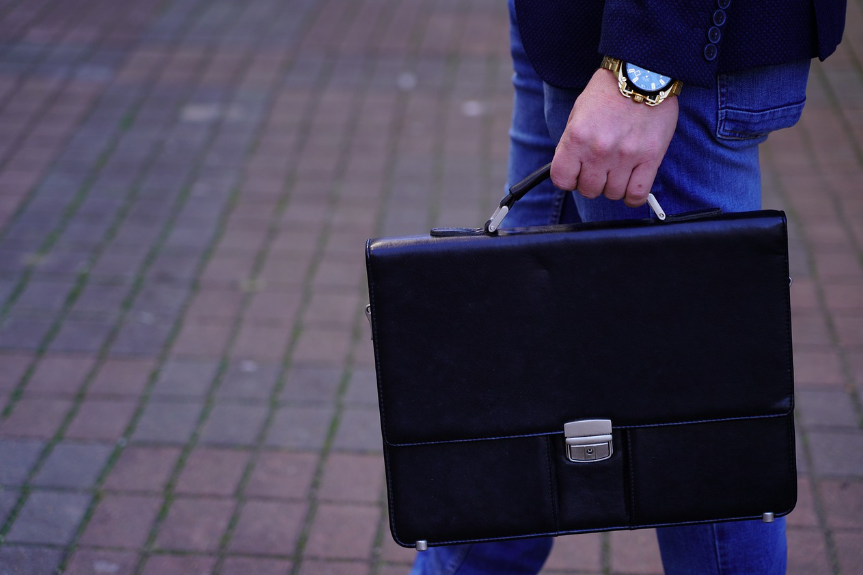Leather briefcases are more than just practical accessories; they are symbols of professionalism, craftsmanship, and style. Over time, however, even the highest-quality leather can wear down, crack, or lose its shine.
Fortunately, with the right care and restoration techniques, you can breathe new life into a worn-out leather briefcase. In this guide, we’ll cover the essential steps for briefcase restoration, from assessing the condition to preventive maintenance for long-term durability.
Assessing the Condition
Before beginning any restoration process, it’s important to assess the current condition of your leather briefcase. Identifying the types of damage will help you decide whether you can handle the restoration yourself or if you’ll need professional help.
Key Areas to Inspect:
- Cracks: Check for dryness and cracks, especially in areas that experience heavy wear like the handles or edges.
- Tears and Scratches: Inspect the surface for tears or deep scratches. Minor scuffs are common but can usually be repaired at home.
- Discoloration and Fading: Leather can fade or discolor due to exposure to sunlight or chemicals. If the color of the leather looks uneven or dull, restoration may require a dye or polish.
DIY vs. Professional Repair
For minor issues like surface scratches or fading, a DIY restoration might be sufficient. However, if there are deep cracks, large tears, or significant structural damage, it’s best to consult a professional leather repair service.
Cleaning the Leather
The first step in any leather care routine is cleaning. Leather is porous and can accumulate dirt, oils, and grime over time, which can degrade the material if left untreated.
Step-by-Step Cleaning Guide:
- Dust and Wipe: Start by wiping the surface with a dry, soft cloth to remove any loose dust and debris.
- Use a Leather-Specific Cleaner: Apply a leather cleaner using a soft cloth or sponge. Always choose products specifically made for leather to avoid damaging the material.
- Spot Clean Stains: For stubborn stains, use a damp cloth and a small amount of leather cleaner. Avoid soaking the leather, as excess moisture can cause damage.
- Dry Completely: Let the briefcase air-dry in a cool, dry place. Never place it under direct sunlight or use heat to speed up the drying process, as this can cause the leather to crack.
Cleaning Tips:
- Avoid using harsh chemicals like bleach or alcohol-based cleaners, as they can dry out and ruin the leather.
- If you notice any tough stains (like ink or grease), spot-test the cleaner on a hidden section of the bag before applying it all over.
Conditioning the Leather
Leather naturally loses its moisture over time, which can lead to cracking and stiffness. Conditioning helps replenish the oils and keeps the leather soft and supple.
Why Conditioning is Important:
Conditioners restore essential oils that keep the leather flexible, prevent drying, and enhance the overall texture. Without conditioning, leather becomes brittle and prone to cracking.
How to Condition Your Briefcase:
- Choose the Right Conditioner: Select a high-quality leather conditioner or cream that matches the type of leather used in your briefcase.
- Apply Evenly: Use a soft cloth to apply a thin layer of conditioner evenly over the surface. Focus on areas that experience the most friction, such as handles and corners.
- Let It Absorb: Allow the conditioner to absorb into the leather for a few hours or overnight.
- Buff the Leather: Once absorbed, gently buff the surface with a dry cloth to remove any excess conditioner and bring out the leather’s natural shine.
DIY Conditioner Option:
A simple DIY conditioner can be made using equal parts of distilled white vinegar and linseed oil. However, using commercial leather conditioners is recommended for the best long-term results.
Repairing Scratches and Tears
Small scratches and scuffs are common in leather briefcases, but they can often be repaired with minimal effort. Larger tears, however, may require professional intervention.
Repairing Minor Scratches:
- Leather Repair Kit: Purchase a leather repair kit that includes filler, dye, and tools for smoothing scratches.
- Apply Leather Filler: For deeper scratches, use the filler from the repair kit to even out the surface. Apply the filler with a palette knife or spatula and let it dry.
- Color Matching: Once the filler is dry, use leather dye that matches the original color of your briefcase to ensure a seamless repair.
Fixing Larger Tears:
For larger rips or tears, consider professional repair services. Experts use specialized tools and techniques to stitch or patch up large areas of damage without compromising the briefcase’s structural integrity.
Restoring Color and Shine
Leather often loses its color and shine due to exposure to sunlight and regular use. Restoring both the color and sheen can make your briefcase look brand new again.
Restoring Faded Color:
- Choose a Leather Dye: Select a color-matching leather dye. It’s important to choose a shade that closely resembles the original color.
- Apply Evenly: Use a sponge or soft cloth to apply the dye in thin, even layers. Start with a small section and gradually work your way across the briefcase.
- Let It Dry: Allow the dye to dry completely before handling the briefcase.
Bringing Back the Shine:
Once the color has been restored, applying a leather polish will protect the dye and give the briefcase a renewed shine.
- Apply Polish: Use a soft cloth to apply a leather polish or balm evenly across the surface.
- Buff to Shine: After allowing the polish to set for a few minutes, buff the briefcase with a clean cloth to enhance its shine.
Preventive Maintenance
To keep your briefcase looking and functioning at its best, regular maintenance is key.
Storage Tips:
- Avoid Direct Sunlight: Store your briefcase in a cool, dry place, away from direct sunlight or heat sources, which can cause fading and cracking.
- Maintain Shape: Stuff the briefcase with paper or fabric when not in use to maintain its shape and prevent creasing.
Routine Care:
- Clean the briefcase every few months and condition it at least twice a year.
- Reapply leather polish as needed to protect the leather and maintain its appearance.
When to Consider Professional Restoration
While many repairs can be done at home, certain types of damage are best handled by professionals.
- Large tears, significant structural damage, or deep cracks that require stitching or advanced repair techniques.
- Briefcases with sentimental or high monetary value.
Finding a Trusted Leather Repair Expert:
Look for experienced leather restoration specialists who use high-quality materials and techniques. Checking reviews and asking for recommendations will help you find a reputable professional.
Restoring a leather briefcase involves a combination of cleaning, conditioning, and repair techniques. By following the steps outlined in this guide, you can restore the beauty and functionality of your briefcase, ensuring that it remains a professional accessory for years to come.
Regular maintenance is key to preventing future damage, so be sure to incorporate routine leather care into your regimen.For leather-specific products to help with your briefcase restoration, visit Angelus Direct, where you'll find high-quality leather cleaners, conditioners, and dyes to ensure the best results.
FAQs
1. How often should I clean and condition my leather briefcase?
It’s recommended to clean your briefcase every few months and condition it at least twice a year to prevent cracking and drying.
2. Can I restore severely faded leather?
Yes, severely faded leather can be restored with a high-quality, color-matching leather dye. Clean the leather thoroughly before applying the dye, following the instructions for optimal results. Angelus Direct leather dyes provide rich, durable colors specifically designed for leather restoration. Explore options at Angelus Direct.
3. What should I do if my leather briefcase has a large tear?
For large tears, it’s advisable to seek professional repair services to ensure proper stitching and reinforcement.

